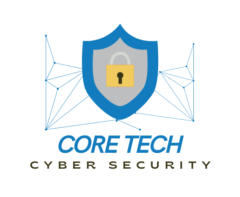Choosing the right cybersecurity course can significantly impact your career trajectory and skill development. With numerous options available, it’s essential to select a course that aligns with your goals, learning style, and current level of expertise. Here’s a guide to help you make an informed decision.
1. Define Your Goals
Before selecting a course, clearly define what you hope to achieve. Consider the following:
- Career Objectives: Are you looking to start a career in cybersecurity, advance to a higher role, or gain a specific certification?
- Skill Development: Do you need foundational knowledge, advanced skills, or specialized expertise?
- Certification Needs: Are you aiming for a specific certification like CISSP, CEH, or CompTIA Security+?
Having a clear goal will help you choose a course that aligns with your career aspirations and learning needs.
2. Assess Your Current Skill Level
Courses are designed for various skill levels, from beginners to advanced professionals. Evaluate your current skill level to choose a course that matches your needs:
- Beginner: Look for introductory courses that cover basic concepts and fundamentals.
- Intermediate: Seek courses that offer a deeper dive into specific areas or technologies.
- Advanced: Opt for specialized or certification-oriented courses that require prior knowledge or experience.
3. Course Content and Curriculum
Examine the course content to ensure it covers relevant and up-to-date topics. Key considerations include:
- Coverage: Ensure the course addresses topics that are important for your goals, such as network security, ethical hacking, or compliance.
- Practical Experience: Look for courses with hands-on labs, projects, and real-world scenarios to apply what you’ve learned.
- Updates: Check if the course content is regularly updated to reflect the latest trends and threats in cybersecurity.
4. Instructor Credentials
The expertise of the instructors can greatly influence the quality of the course. Consider:
- Instructor Background: Look for courses taught by experienced professionals with relevant certifications and industry experience.
- Teaching Style: Evaluate whether the instructor’s teaching style matches your learning preferences, such as interactive lectures, practical demonstrations, or self-paced materials.
5. Course Format and Flexibility
Different courses offer various formats and levels of flexibility. Choose one that fits your schedule and learning style:
- Online vs. In-person: Online courses offer flexibility, while in-person courses may provide more direct interaction.
- Self-paced vs. Scheduled: Self-paced courses allow you to learn at your own speed, while scheduled courses may provide more structure and deadlines.
- Interactive Elements: Courses with forums, live Q&A sessions, and peer interactions can enhance learning.
6. Cost and Value
Consider the cost of the course and what is included. Assess whether the investment aligns with your budget and the value you receive:
- Free vs. Paid: Free courses are a good starting point but may lack depth or certification. Paid courses often offer more comprehensive content, certification, and support.
- Certification Costs: If the course prepares you for a certification exam, factor in the cost of the certification exam and any additional materials.
7. Reviews and Recommendations
Research the course’s reputation by:
- Reading Reviews: Check student reviews and testimonials to gauge the course’s effectiveness and quality.
- Seeking Recommendations: Ask colleagues or industry professionals for their recommendations and experiences with specific courses.
8. Accreditation and Recognition
Ensure the course or certification is recognized in the industry:
- Accreditation: Verify if the course provider or certification is accredited by a reputable organization.
- Industry Recognition: Check if the certification or course is well-regarded by employers and aligns with industry standards.
Conclusion
Choosing the right cybersecurity course involves evaluating your goals, current skill level, course content, instructor expertise, format, cost, and industry recognition. By carefully considering these factors, you can select a course that best fits your needs and helps you advance your cybersecurity career.
Start exploring courses today and invest in your future with a course that aligns with your professional objectives and learning preferences.
